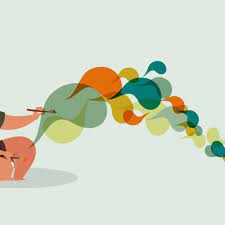The Art of Designs
Designs are the visual representations of creativity, innovation, and functionality. They play a crucial role in shaping our world, influencing our perceptions, and enhancing our experiences. From intricate patterns to sleek interfaces, designs encompass a wide spectrum of forms and purposes.
The Power of Design
Designs have the power to communicate messages, evoke emotions, and solve problems. Whether it’s a logo that symbolises a brand’s identity, a website that guides user interactions, or an interior layout that enhances spatial aesthetics – designs are integral to human expression and interaction.
The Elements of Design
Designs are composed of various elements such as line, shape, colour, texture, and space. These elements work together harmoniously to create visual compositions that are aesthetically pleasing and functional. Understanding how these elements interact is essential for creating impactful designs.
The Evolution of Design
Design trends evolve over time in response to cultural shifts, technological advancements, and aesthetic preferences. What was considered modern and cutting-edge in the past may now appear outdated or retro. Designers constantly adapt to new trends while also drawing inspiration from historical styles.
The Role of Designers
Designers are the architects of visual communication. They combine artistic flair with technical expertise to bring ideas to life in tangible forms. Whether they work in graphic design, fashion design, industrial design or any other field – designers have the ability to shape how we perceive the world around us.
The Future of Design
As technology continues to advance at a rapid pace, the future of design holds endless possibilities. Virtual reality, artificial intelligence, sustainable design practices – these are just some areas where designers can innovate and push boundaries. The key lies in staying curious, adaptable and open to new ideas.
In Conclusion
Designs are not just about aesthetics; they are about solving problems creatively and making meaningful connections with people. As we navigate an increasingly visual world, the importance of good design cannot be overstated. So next time you encounter a well-crafted logo or an intuitively designed product – take a moment to appreciate the artistry behind it.
Five Essential Design Tips for Crafting Visually Cohesive and Reader-Friendly Layouts
- Choose a cohesive colour palette to create a unified look.
- Use white space effectively to allow elements to breathe and improve readability.
- Ensure your typography is easy to read and complements the overall design.
- Balance different visual elements such as text, images, and graphics for a harmonious composition.
- Consistency is key – maintain consistent styles throughout your design for a polished finish.
Choose a cohesive colour palette to create a unified look.
When it comes to design, selecting a cohesive colour palette is a fundamental tip that can greatly impact the overall aesthetic and effectiveness of a project. By choosing colours that complement each other and work harmoniously together, designers can create a unified look that conveys a sense of balance, consistency, and professionalism. A well-thought-out colour scheme not only enhances visual appeal but also helps establish brand identity, evoke specific emotions, and guide user perception. Consistency in colour choice across various design elements can tie everything together seamlessly and leave a lasting impression on the audience.
Use white space effectively to allow elements to breathe and improve readability.
Effective use of white space is a fundamental principle in design that can significantly enhance the overall visual appeal and readability of a composition. By allowing elements to breathe and creating a sense of balance, white space not only adds elegance and sophistication to the design but also improves the clarity and focus of the content. When used strategically, white space can guide the viewer’s eye, highlight key information, and create a more harmonious layout that is pleasing to the eye. Designers who master the art of utilising white space effectively can elevate their designs to new levels of impact and engagement.
Ensure your typography is easy to read and complements the overall design.
When focusing on designs, it is crucial to pay attention to typography to ensure that it is both easy to read and complements the overall design aesthetic. Typography plays a significant role in conveying messages effectively and enhancing the visual appeal of a design. By selecting appropriate fonts, sizes, and spacing, designers can create a harmonious balance that not only makes the text legible but also enhances the overall look and feel of the design. Choosing typography that aligns with the brand’s identity and purpose can elevate the design to a new level of sophistication and cohesiveness.
Balance different visual elements such as text, images, and graphics for a harmonious composition.
To create a visually appealing design, it is essential to strike a balance between various elements such as text, images, and graphics. By carefully arranging these components in a harmonious composition, designers can ensure that the overall visual impact is cohesive and engaging. Balancing text with images and graphics not only enhances the aesthetic appeal of a design but also improves readability and user experience. This thoughtful integration of different visual elements is key to creating a well-rounded and effective design that captures attention and conveys information effectively.
Consistency is key – maintain consistent styles throughout your design for a polished finish.
Consistency is key when it comes to design. By maintaining consistent styles throughout your work, you ensure a polished and cohesive finish that enhances the overall aesthetic appeal. Whether it’s aligning typography, colour schemes, or visual elements, a unified approach creates a sense of harmony and professionalism. Consistency not only improves visual flow but also helps in reinforcing brand identity and making your design more memorable to the audience.
